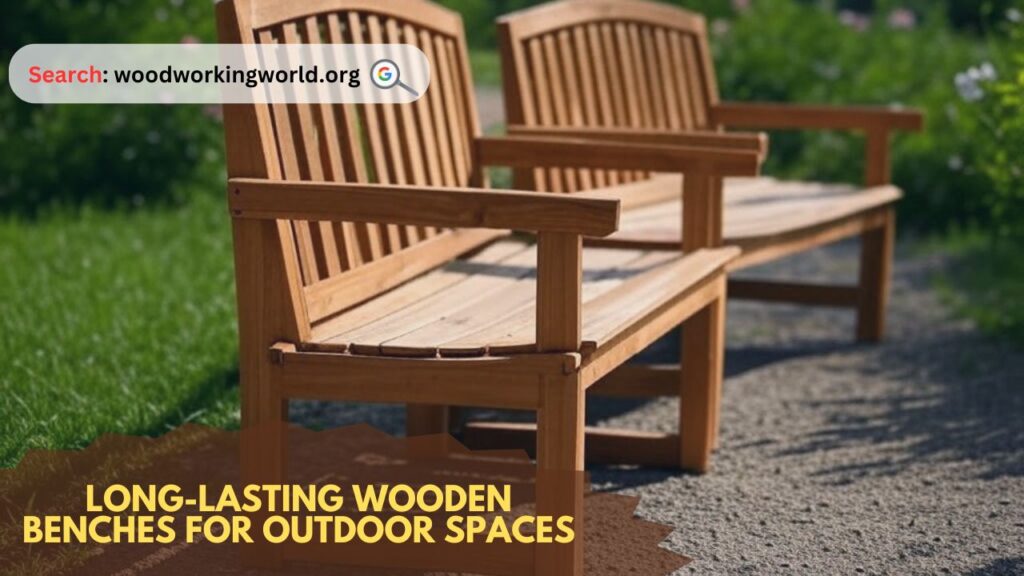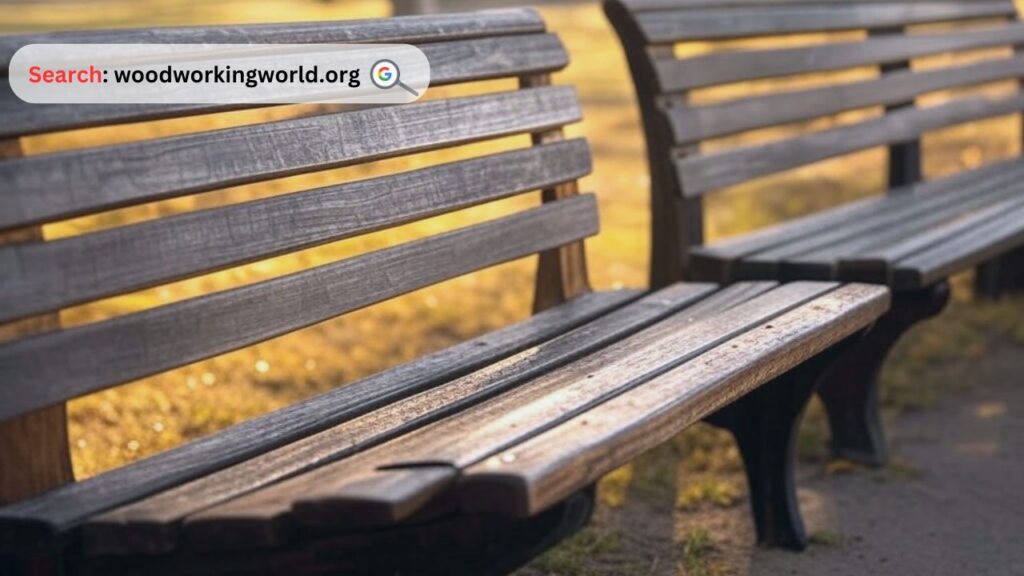Discover the best long-lasting wooden benches for outdoor spaces. Learn about durable wood types, maintenance tips, and stylish designs for your yard.
Outdoor spaces, whether in a backyard, park, or garden, require durable and aesthetically pleasing seating options. Wooden benches are a timeless choice that offers both functionality and natural beauty. However, not all wooden benches are created equal. The right selection of wood, maintenance routine, and installation process determine their longevity.

This article explores how to choose long-lasting wooden benches for outdoor spaces, step-by-step guidance on maintaining them, a comparison of wood types, and answers to common questions to help you make the best decision for your needs.
Why Choose Wooden Benches for Outdoor Spaces?
Wooden benches provide a classic, warm, and inviting feel to any outdoor space. They blend seamlessly with nature and can be customized with various finishes and designs. Here are a few reasons why wooden benches are an excellent choice:
- Aesthetic Appeal: Complements the natural surroundings
- Eco-Friendly: Sustainable wood options reduce environmental impact
- Durability: Certain hardwoods can last decades with proper care
- Customization: Can be stained, painted, or left natural to suit any style
- Comfort: Offers a natural warmth compared to metal or stone seating
Build 16,000+ Projects with Step-by-Step Plans—No Big Workshop or Costly Tools Needed! Start Now!
Step-by-Step Guide to Choosing and Maintaining Long-lasting Wooden Benches
1. Selecting the Right Wood Type
The type of wood plays a crucial role in determining the longevity of your bench. Here are some of the best wood options for outdoor use:
- Teak: Naturally resistant to moisture, insects, and rot
- Cedar: Lightweight and naturally repels insects
- Redwood: High resistance to decay and rot
- Oak: Strong and durable but requires sealing
- Eucalyptus: Affordable and durable with proper treatment
2. Ensuring Proper Treatment and Finishing
To extend the lifespan of a wooden bench, proper treatment is essential:
- Apply sealants to protect against moisture and UV rays
- Use oil-based stains for deeper wood penetration
- Consider weatherproof paint for added protection
- Apply varnish annually to maintain durability
3. Optimal Bench Placement
The placement of your bench can affect its longevity. Avoid locations that expose it to excessive moisture, such as:
- Direct soil contact (place on pavers or gravel instead)
- Under constant shade (encourages mold growth)
- Near sprinklers (excess moisture weakens wood fibers)
4. Regular Maintenance Routine
A well-maintained wooden bench can last for decades. Follow these maintenance steps:
- Clean Regularly: Use mild soap and water to remove dirt
- Inspect for Damage: Check for cracks, loose screws, or signs of rot
- Reapply Finishes: Refresh sealant or stain every year
- Protect During Harsh Weather: Use covers or store indoors in winter
5. Assembling and Installing the Bench Properly
- Use galvanized or stainless steel hardware to prevent rust
- Ensure a sturdy and level foundation to avoid uneven stress
- If using concrete anchors, seal the base to prevent water infiltration
Expert tips on Woodworking 🌿📦 Watch now!

Comparison Table: Best Woods for Outdoor Benches
| Wood Type | Durability | Maintenance Needs | Natural Resistance | Cost |
|---|---|---|---|---|
| Teak | 50+ years | Low | High (moisture, rot, insects) | $$$$ |
| Cedar | 20-30 years | Moderate | High (insects) | $$ |
| Redwood | 25-30 years | Moderate | High (moisture, rot) | $$$ |
| Oak | 20-40 years | High | Moderate | $$$ |
| Eucalyptus | 15-25 years | Moderate | High (moisture, insects) | $$ |
Key Features to Look for in a Long-lasting Wooden Bench
When purchasing or building a wooden bench, consider the following:
- High-quality hardwood for durability
- Weather-resistant finish to withstand the elements
- Strong joinery (e.g., mortise and tenon) for longevity
- Ergonomic design for comfortable seating
- Sustainable sourcing for eco-friendly choices
Relevant Quote
“A well-built wooden bench is not just a seat, but an invitation to pause, relax, and connect with nature.” – Anonymous
Frequently Asked Questions (FAQ)
1. What is the best wood for outdoor benches?
Teak is considered the best due to its natural oils that resist moisture, decay, and insects.
2. How can I protect my wooden bench from weather damage?
Apply a weatherproof sealant annually, use furniture covers, and position it in a sheltered area if possible.
3. Can I leave my wooden bench outside all year?
Yes, but it’s best to use protective covers or move it indoors during extreme weather conditions.
4. How do I remove mold or mildew from my wooden bench?
Mix equal parts white vinegar and water, scrub gently, and rinse with clean water.
5. What’s the best way to clean a wooden bench?
Use mild soap and water with a soft brush; avoid power washing as it can damage the wood.
6. How often should I reapply sealant or stain?
Once a year is recommended, or more frequently in areas with harsh weather conditions.

Conclusion
Investing in a high-quality wooden bench for your outdoor space ensures both aesthetic and functional benefits. By selecting the right wood, applying protective treatments, and following a consistent maintenance routine, your bench can last for decades. Whether in a garden, park, or patio, a well-maintained wooden bench provides a timeless charm and a perfect place for relaxation.
With the right knowledge, you can ensure your outdoor wooden bench remains a long-lasting, comfortable, and beautiful addition to your space.
Click To Order Teds Woodworking With A 60-Money-back Guarantee From – Official Website